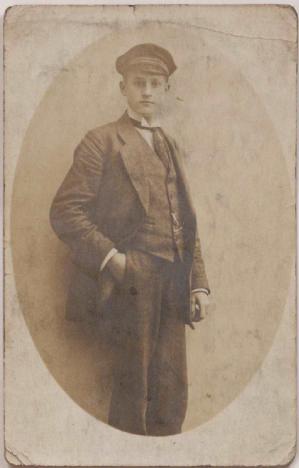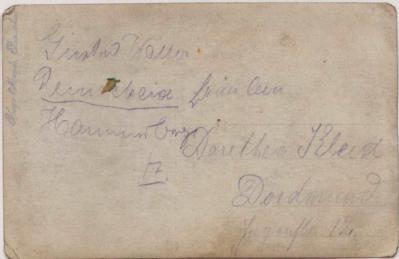Interpreting archives

What are archives?
Records created, used, received or assembled by organisations, families and individuals in the course of their activities"
Most archives started life as working documents. They were created and acquired to do a specific job at the time: to communicate and to preserve information; to protect rights and interests; to justify actions; to get people to do things, or at least to influence them.
They can include correspondence, minutes, reports, registers, accounts, plans, publicity material and even e-mails and databases.
They are records which are usually no longer needed for their original purpose but which still contain valuable information.
They record a vast range of interactions between people: formal, official, political, financial, legal, commercial, educational, private and personal.
They are some of the raw materials from which an interpretation of the past can be built up.
They tell us about the people who created and used them, the people they came into contact with, and about events, issues and trends.
And they are not just 'very old stuff'. Some archives were created centuries ago, but many, like a lot of those in the Modern Records Centre, are of much more recent date.
How should I interpret them?
Remember the who and the why"
Archives are not neutral sources. They were created, not to provide documentary evidence for future researchers, but to perform a specific task - this could be anything from conveying personal thoughts to a friend in a private letter to arguing for policy changes in a government memorandum. To use primary sources effectively you need to ask a series of key questions to put them in context and assess their reliability as evidence:
- Who is the author (and are they writing in a personal or official role)?
- Why are they writing this document (i.e. to provide information, to attempt to persuade someone...)?
- What was the intended audience, and how might this change the contents and style of the document (is it a private or public document, will it have a wide circulation...)?
- How accurate is their view of the subject likely to be (do they have access to privileged or first hand information, do they have a vested interest, are they biased for or against...)?
So it is down to you to interpret them, and it helps if you know who created or acquired them and why. In other words, their provenance and context.
What is an archive "collection"?
In the same way that an archaeologist is able to put a find into context by seeing what has been buried in the ground next to it, a researcher can get an idea of the context of a single document by looking to see what else has been filed away with it, and what archive collection the item is contained in. If archive material is received from a single organisation or individual it will be catalogued together in one distinct collection. Researchers can therefore get a better understanding of how an organisation or individual worked by looking at the collection (and its catalogue) as a whole.
All archives from a particular source are catalogued together in a way which reflects their original use, and any known information about their source is given in the catalogues. This differs from the way books are generally catalogued by being slotted into pre-determined subject classification schemes.
Most archive catalogues, including ours, are arranged in descriptive 'levels'. This is a key idea, so find out more here and see these examples from the Modern Records Centre catalogues: description of a whole collection; description of a file, including links to information about the collection and series that the file is within.
Putting documents into context: an example
If a source is taken in isolation, stripped of context, it can be difficult to understand. Examining the background and motivation of the people who created and owned the documents, other sources created by the same individual or organisation, and the broader social and historical context can give us a much fuller picture.
We're going to look at one document - a single, slightly grubby photograph - to see how putting it into a broader context enriches our understanding of the source.
We can some get basic contextual information from the format and appearance of the document. Photographs appeared in different formats during the 19th and 20th centuries, as the new technology developed. This is a photographic postcard, a format which became popular in the first decades of the 20th century, and which opened up studio photography to a mass market. It shows a smartly dressed young man - going to a photographic studio to get your portrait taken was a special occasion, so people often dressed up in their best clothes.
The back of the postcard includes a German name and address in faint handwriting: Gustave Waller, Remschein Fraulein, Hammerberg, Doutheg Kleist, h. Dordmund, Jagenstr. 12. This could be the person in the photograph, or the person to whom the image was sent.
To try to find out more, we can see what archive collection it comes from (i.e. who owned the document). In this case, the photograph is included in the archives of Percy Collick, a former trade union leader and Member of Parliament (biographical information is included in the archive catalogue). There are two possible links with Germany in the early 20th century - Collick fought on the Western Front during the First World War and was involved in the international labour movement during the 1920s.
Now you know who the item belonged to, it might be possible to find more information by looking to see if there are other documents in the same archive collection that could shed light on the relationship between Percy Collick and Gustave Waller.
In the same file as the photograph, there are several other documents which help to put the photograph in context - several notes of the address (in clearer handwriting), a letter from Percy Collick to Gustave Waller dated 1921, and a note written by Collick in 1965.
The letter from Collick to Waller describes their one and only meeting:
I think it would have been about Aug 9th 1918, that you were wounded at Cerisy on the Somme during the great attack made by the British 4th Army under the Command of General Rawlinson, which was launch[ed] on Aug 8th & you were brought down along with many of your wounded comrades to Dours, & and their [there] loaded up in ambulance wagons on the Decaville Railway, well I was the British Tommy who was on the Decaville train on the engine that helped to load you up, & if you can remember (perhaps you can) I made you comfortable & tried to console you, & then I assisted you to get the wallet from you [your] pocket, from whence you took your photo & wrote your address on the back of it. Well comrade fortunately I escaped the worst horrors of war, & I treasured your photograph to the end & I allways [always] avowed I would write you, hence this letter.
The later note reinforces the statement, and says that Collick had no further contact with Waller:
Photograph of a young badly wounded German prisoner I helped. "Gustave Waller" in France First World War & copy of letter I sent for him after the war. I had no reply.
There are only a small number of personal letters and photographs included in Percy Collick's archives. The fact that he kept a photograph given to him by an wounded enemy soldier in 1918 until his death, tried to contact the wounded man in 1921 (keeping a copy of the letter), and wrote a note about it in 1965, is testament to the impact that the brief encounter with Waller had on Collick.
We could also put this document in a wider context by looking at that particular First World War offensive, treatment of prisoners and the wounded, fraternisation between soldiers on opposing sides, and ideas of war and memory.
The only reason that we can connect these documents is because they are physically together. If they were in a large file, and someone shuffled around the contents, or removed one item and put it into another file, that bond is broken, and it makes it much harder for researchers to understand the context and connections. That is why it is important, when doing archival research, to try and keep files in the order in which you find them - otherwise you can break the bond between documents and destroy evidence.


